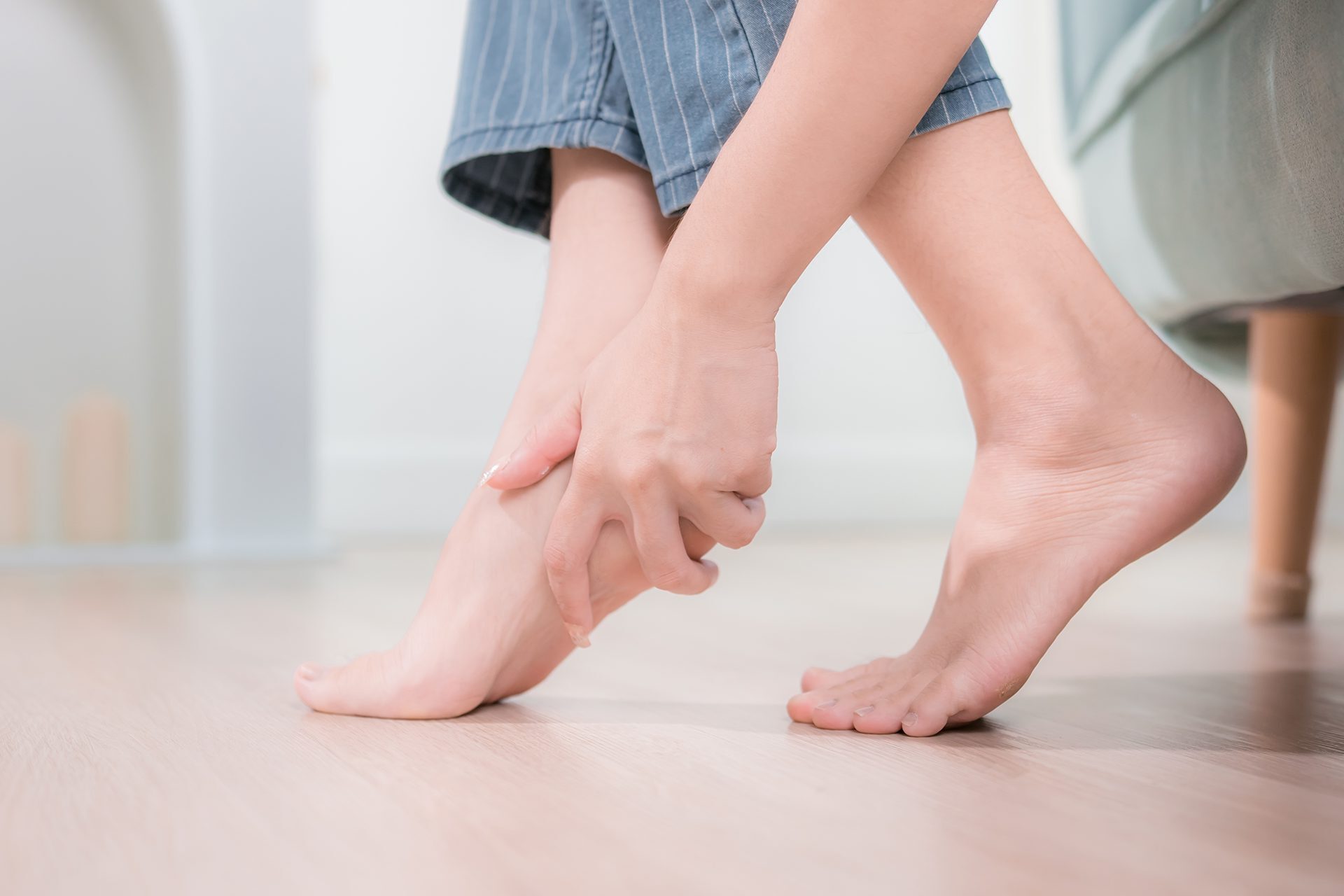
Heel Spur Syndrome is a common foot condition that can cause significant pain and discomfort, especially in the morning or after periods of inactivity. This condition occurs when calcium deposits build up on the underside of the heel bone, forming a bony growth known as a heel spur. Heel spurs are often associated with plantar fasciitis, a painful inflammation of the tissue that runs along the bottom of the foot. Risk factors include abnormal walking gait, running on hard surfaces, poorly fitted shoes, excess weight, and age. Understanding the causes, symptoms, and treatment options can help manage this condition effectively. Here are 30 essential facts about Heel Spur Syndrome to help you better understand and address this common issue.
What is Heel Spur Syndrome?
Heel spur syndrome, also known as calcaneal spur syndrome, is a condition where a bony growth forms on the underside of the heel bone. This can cause significant pain and discomfort, especially in the morning or after periods of inactivity. Let's explore some key facts about this condition.
-
Definition and Causes
Heel spur syndrome occurs when calcium deposits build up on the underside of the heel bone, leading to a bony growth. This usually happens over several months due to strains on foot muscles and ligaments, stretching of the plantar fascia, and repeated tearing of the heel bone's membrane. -
Prevalence
Heel spurs affect about 15% of the population. Many people with heel spurs do not experience symptoms and often discover the condition incidentally during an X-ray for another issue. -
Symptoms
The main symptom is heel pain, which can be intermittent or chronic. Pain is often worse in the morning or after inactivity and can worsen with walking, jogging, or running. Inflammation at the spur's formation point also contributes to pain.
Relationship with Plantar Fasciitis
Heel spurs are frequently linked to plantar fasciitis, a condition involving inflammation of the plantar fascia. This connection is crucial for understanding the broader impact of heel spurs.
-
Association with Plantar Fasciitis
About 70% of people with plantar fasciitis have heel spurs. The inflammation of the plantar fascia often leads to the development of these bony growths. -
Body's Protective Mechanism
Heel spurs are thought to be the body's way of protecting the plantar fascia and other tissues from damage and strain. When damage occurs, cells deposit calcium, which can build up into sharp protrusions over time.
Where Heel Spurs Form
Heel spurs typically form on the bottom of the heel, but they can also appear in other areas. Understanding their formation locations helps in diagnosing and treating the condition.
- Formation Locations
Heel spurs usually form on the bottom of the heel but can also occur near the Achilles tendon. This less common location may require specific diagnostic imaging to confirm.
Risk Factors for Heel Spur Syndrome
Several risk factors contribute to the development of heel spurs. Knowing these can help in prevention and early intervention.
-
Walking Gait Abnormalities
Abnormal walking gait can place excessive stress on the heel bone, ligaments, and nerves near the heel. -
Running or Jogging
Activities like running or jogging, especially on hard surfaces, increase the risk of developing heel spurs. -
Poorly Fitted Shoes
Wearing shoes that are poorly fitted or badly worn, especially those lacking appropriate arch support, can contribute to heel spurs. -
Excess Weight and Obesity
Excess weight and obesity increase stress on the heel bone and surrounding tissues, making heel spur formation more likely. -
Increasing Age
Heel spurs are more common in adults over 40, as bones can grow larger and longer with age. -
Diabetes
People with diabetes are at higher risk due to nerve damage and poor circulation. -
Flat Feet or High Arches
Having flat feet or high arches can increase the risk due to abnormal gait mechanics.
Diagnosing Heel Spur Syndrome
Diagnosis involves a combination of physical examination, medical history, and imaging studies. Accurate diagnosis is essential for effective treatment.
- Diagnosis
An X-ray is often used to confirm the presence of a heel spur. Ultrasound or MRI may be used to assess inflammation and damage to surrounding tissues.
Treatment Options for Heel Spur Syndrome
Treatment varies depending on symptom severity and individual needs. Both non-surgical and surgical options are available.
-
Exercise
Stretching exercises, especially for the calf muscles and plantar fascia, can help alleviate pain and improve flexibility. -
Custom-Made Orthotics
Orthotic devices help redistribute pressure and reduce stress on the heel bone and surrounding tissues. -
Anti-Inflammatory Medications
NSAIDs can help reduce inflammation and alleviate pain. -
Cortisone Injections
Cortisone injections provide temporary relief by reducing inflammation and swelling. -
Physical Therapy
Physical therapy may include ultrasound, laser therapy, and extracorporeal shockwave therapy to promote healing and reduce pain.
When Surgery is Necessary
If conservative treatments fail, surgical intervention may be required. Understanding surgical options helps in making informed decisions.
-
Surgical Intervention
Surgical techniques include releasing the plantar fascia and removing the heel spur to alleviate pain and restore mobility. -
Recovery and Rehabilitation
Post-surgery, patients follow a rehabilitation program that includes rest, ice, compression, and elevation (RICE). They may need bandages, splints, casts, surgical shoes, crutches, or canes to support the foot during recovery.
Preventing Heel Spur Syndrome
Prevention involves maintaining good foot health and adopting lifestyle changes to reduce stress on the heel bone and surrounding tissues.
-
Wearing Well-Fitting Shoes
Choosing shoes with shock-absorbent soles, rigid shanks, and supportive heel counters helps distribute pressure evenly. -
Choosing Appropriate Footwear
Selecting shoes appropriate for each physical activity reduces the risk of developing heel spurs. -
Warming Up and Stretching
Engaging in stretching exercises before activities and pacing oneself during activities reduces strain on the heel bone and surrounding tissues. -
Maintaining a Healthy Weight
Losing weight if overweight reduces stress on the heel bone and surrounding tissues.
Impact on Daily Activities
Heel spur syndrome can significantly impact daily activities, making it difficult to walk, run, or engage in other physical activities.
- Impact on Daily Activities
The pain can be debilitating, especially in patients who experience severe pain and discomfort.
Research and Treatment Modalities
Research has explored various treatment modalities for heel spurs, aiming to improve patient outcomes.
- Treatment Modalities
Research has explored radiofrequency, ultrasound, laser therapy, NSAIDs, steroids, local anesthesia, extracorporeal shockwave therapy, splints, modified shoes with silicon shoe implants, physiotherapy, stretching, and taping.
Incidence and Age
Heel spurs become more common as people age. Understanding this helps in early detection and treatment.
- Incidence and Age
The incidence increases significantly after the age of 40, with large heel spurs being more prevalent in older adults.
Calcaneal Tuberosity and Plantar Fascia Damage
Understanding the anatomy and damage involved in heel spur formation helps in effective treatment.
-
Calcaneal Tuberosity
Heel spurs typically form on the calcaneal tuberosity, the bony prominence at the back of the heel, prone to stress and strain. -
Plantar Fascia Damage
Damage to the plantar fascia is a primary cause of heel spur formation. When the plantar fascia becomes damaged or overstretched, the body responds by creating new bone growth to protect the area.
Final Thoughts on Heel Spur Syndrome
Heel spur syndrome affects many people, causing pain and discomfort. Understanding its causes, symptoms, and treatments can help manage this condition. Heel spurs often form due to calcium deposits from strain on foot muscles and ligaments. Symptoms include heel pain, especially in the morning or after inactivity. Diagnosis usually involves a physical exam and X-rays. Non-surgical treatments like stretching, orthotics, and anti-inflammatory meds often provide relief. Surgery is a last resort if other treatments fail. Preventing heel spurs involves wearing well-fitted shoes, maintaining a healthy weight, and doing proper stretching exercises. Early diagnosis and treatment can significantly improve quality of life. By adopting preventive measures and seeking timely medical advice, individuals can manage heel spur syndrome effectively.
Was this page helpful?
Our commitment to delivering trustworthy and engaging content is at the heart of what we do. Each fact on our site is contributed by real users like you, bringing a wealth of diverse insights and information. To ensure the highest standards of accuracy and reliability, our dedicated editors meticulously review each submission. This process guarantees that the facts we share are not only fascinating but also credible. Trust in our commitment to quality and authenticity as you explore and learn with us.


